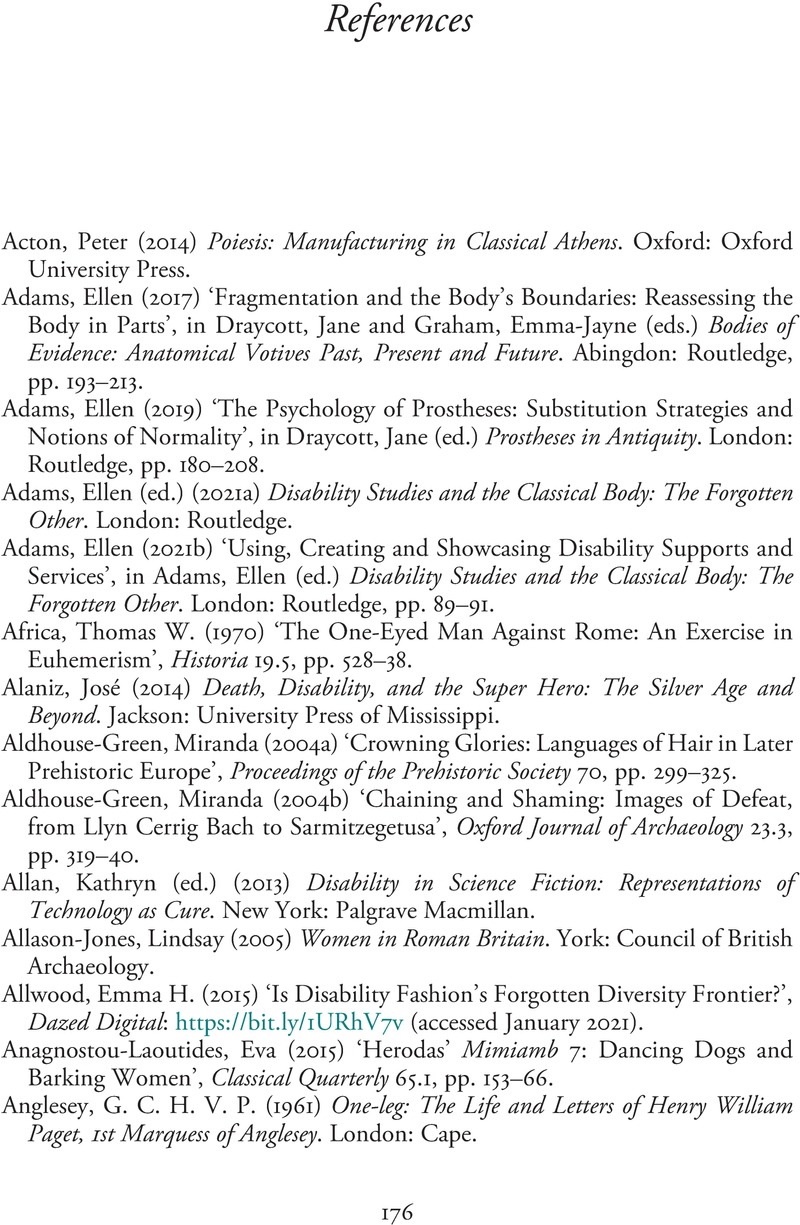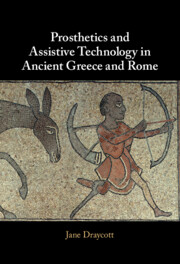Book contents
- Prosthetics and Assistive Technology in Ancient Greece and Rome
- Prosthetics and Assistive Technology in Ancient Greece and Rome
- Copyright page
- Dedication
- Contents
- Figures
- Tables
- Acknowledgements
- Abbreviations
- Introduction
- Chapter 1 Extremity Prostheses and Assistive Technology
- Chapter 2 Facial Prostheses
- Chapter 3 Hair Prostheses
- Chapter 4 Design, Commission, and Manufacture of Prostheses
- Chapter 5 Living Prostheses
- Conclusion
- References
- Index Locorum
- Index
- References
References
Published online by Cambridge University Press: 08 December 2022
- Prosthetics and Assistive Technology in Ancient Greece and Rome
- Prosthetics and Assistive Technology in Ancient Greece and Rome
- Copyright page
- Dedication
- Contents
- Figures
- Tables
- Acknowledgements
- Abbreviations
- Introduction
- Chapter 1 Extremity Prostheses and Assistive Technology
- Chapter 2 Facial Prostheses
- Chapter 3 Hair Prostheses
- Chapter 4 Design, Commission, and Manufacture of Prostheses
- Chapter 5 Living Prostheses
- Conclusion
- References
- Index Locorum
- Index
- References
Summary

- Type
- Chapter
- Information
- Prosthetics and Assistive Technology in Ancient Greece and Rome , pp. 176 - 194Publisher: Cambridge University PressPrint publication year: 2022



